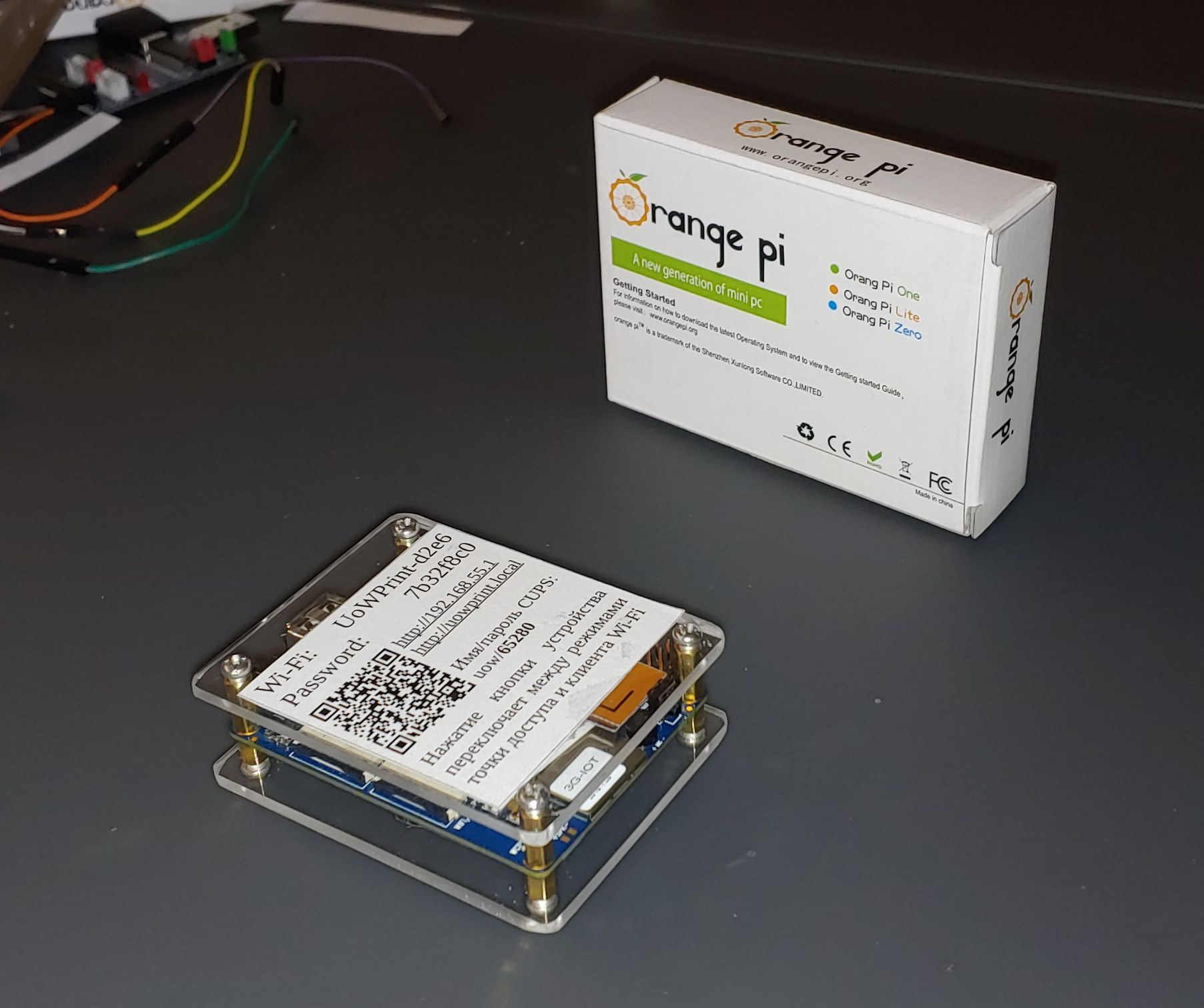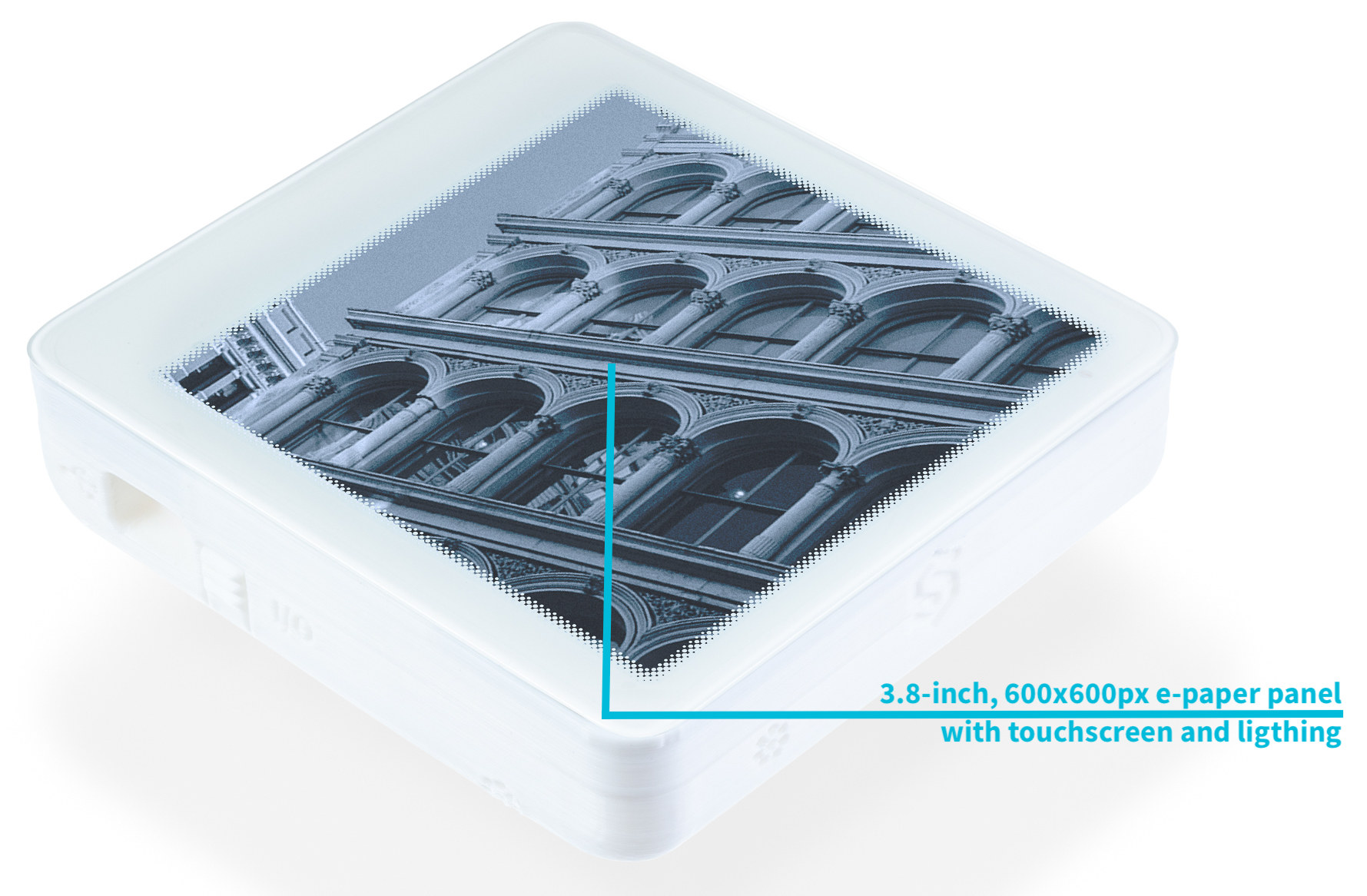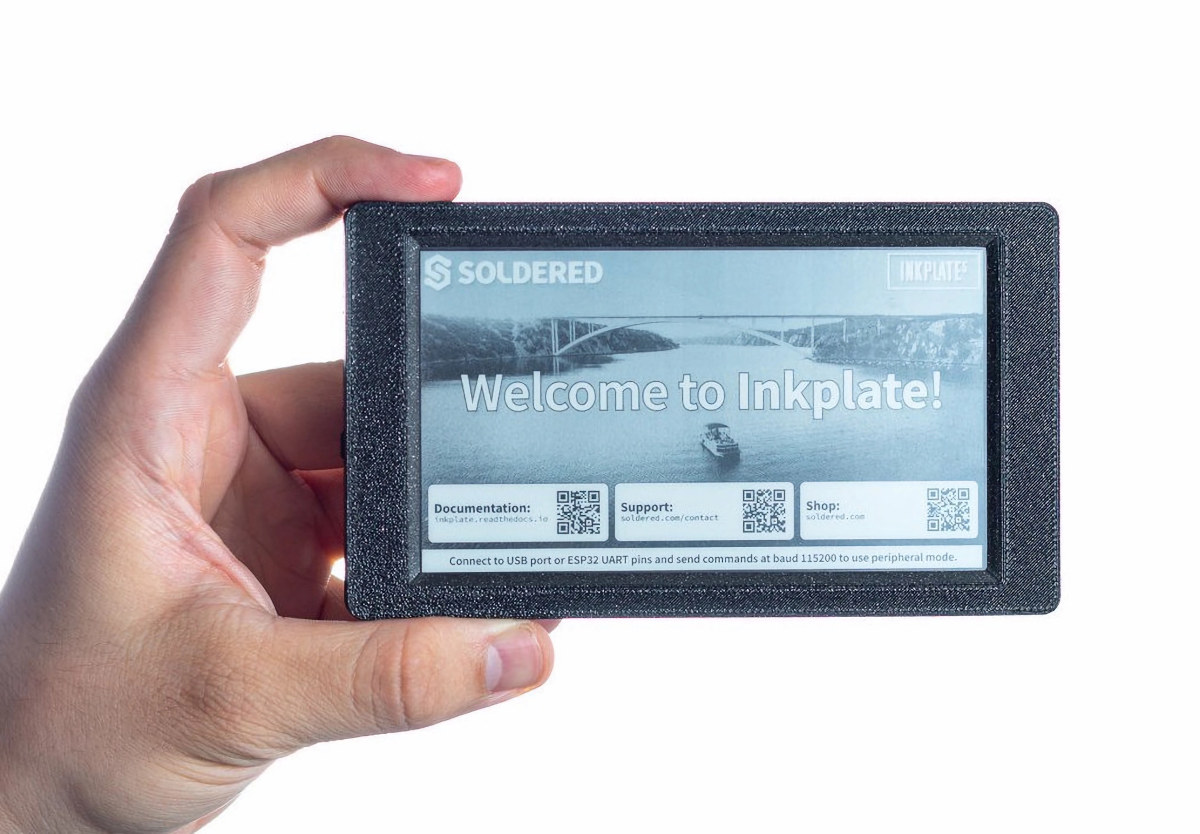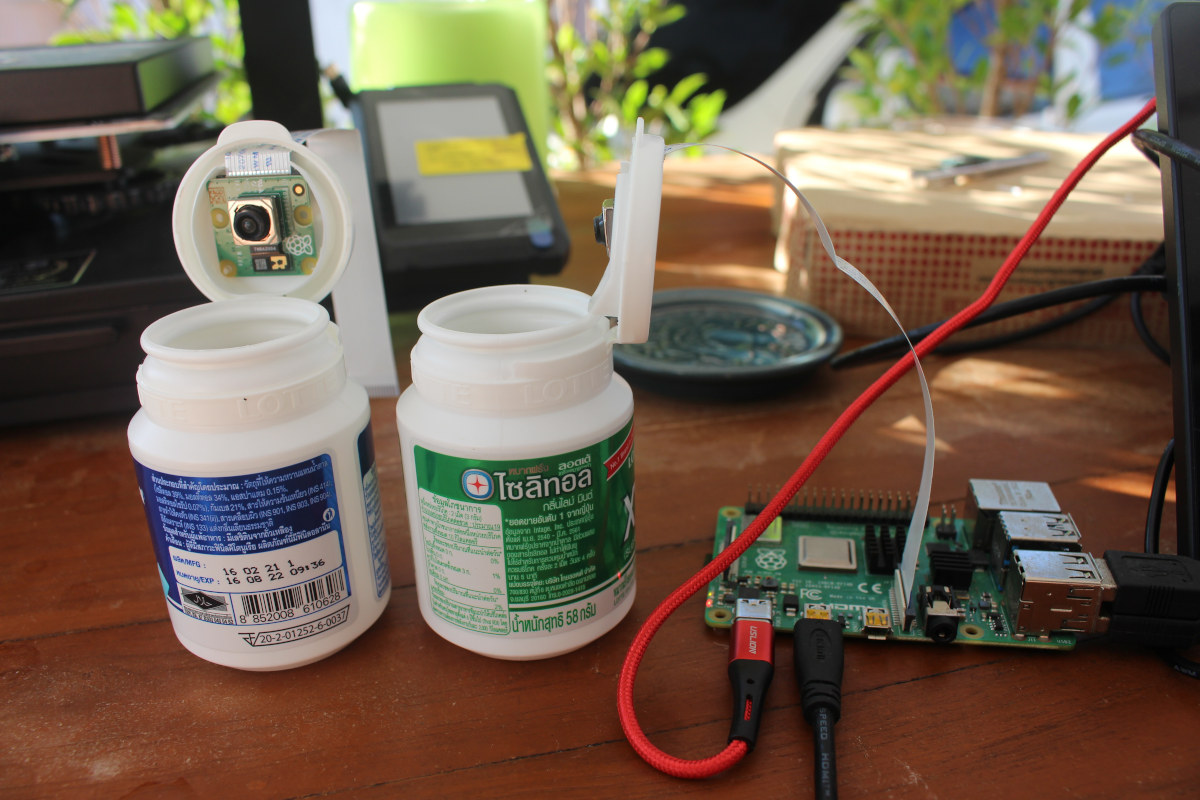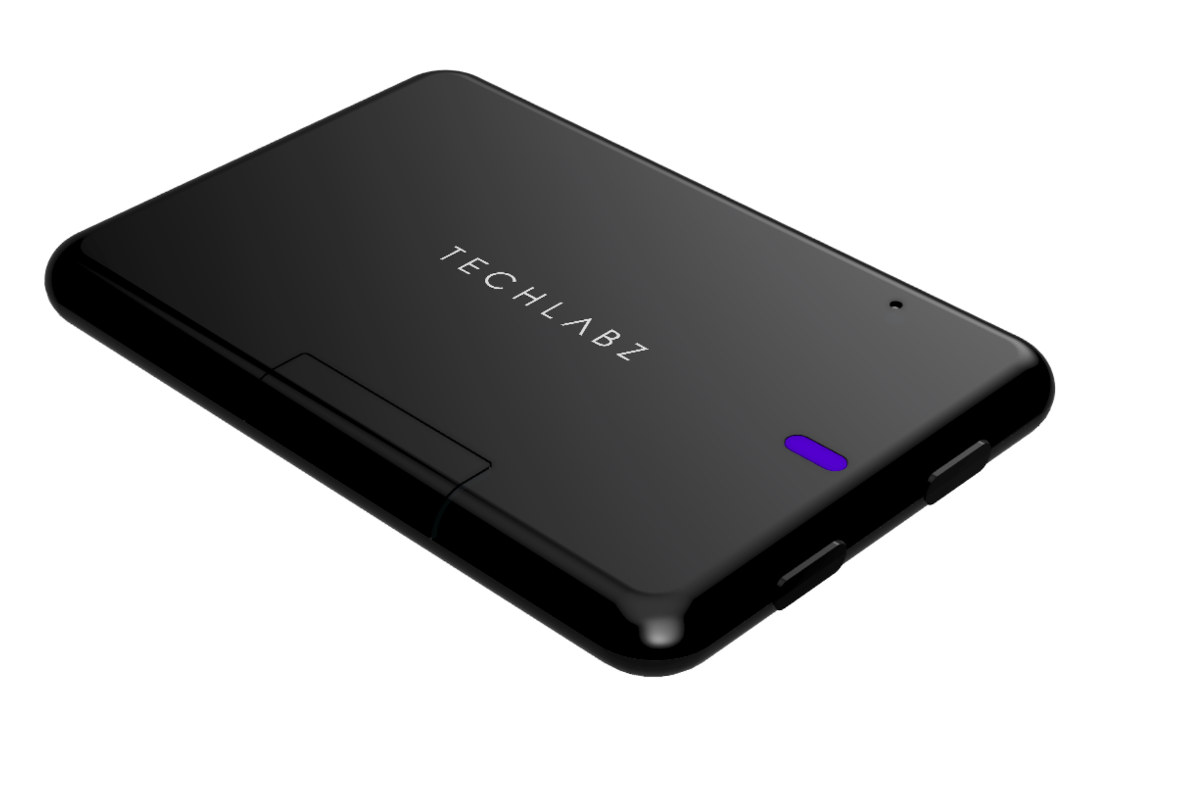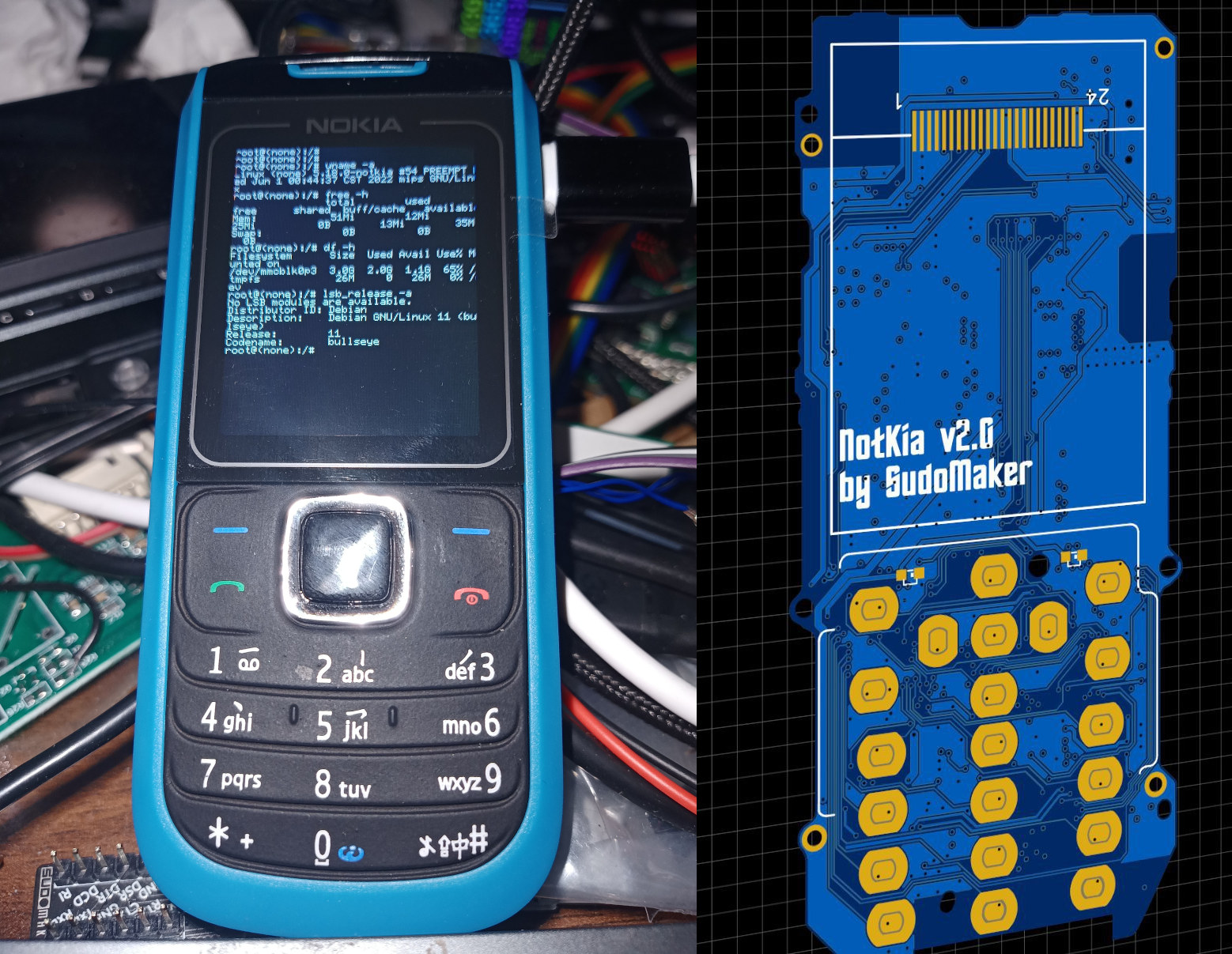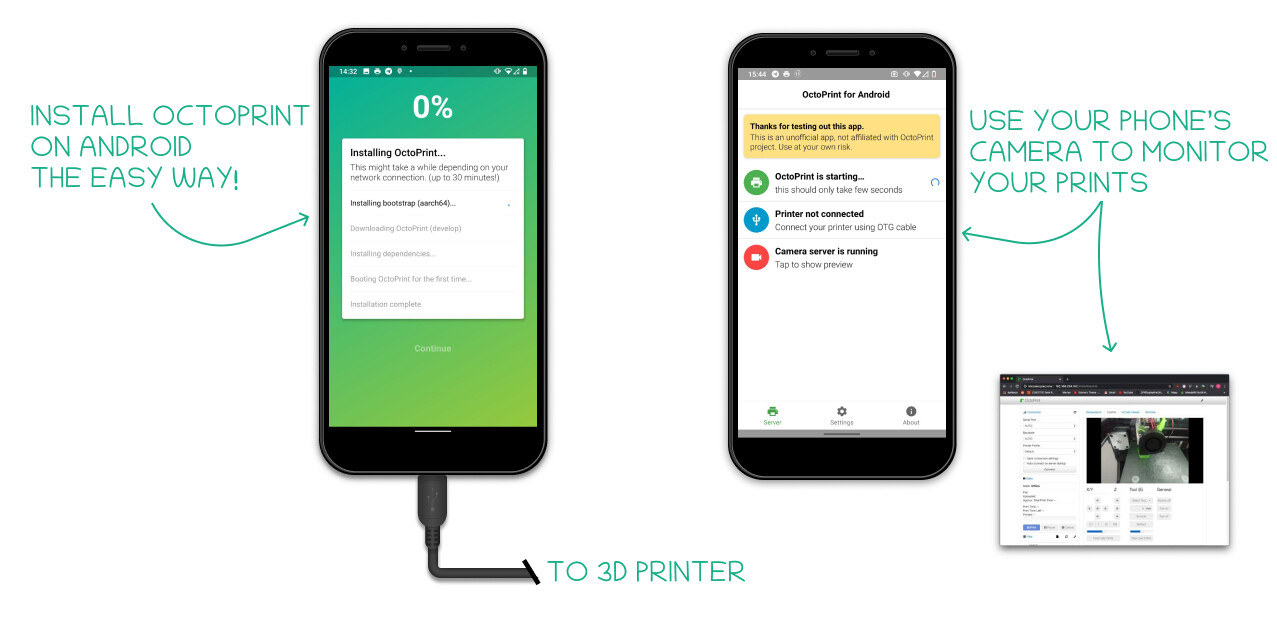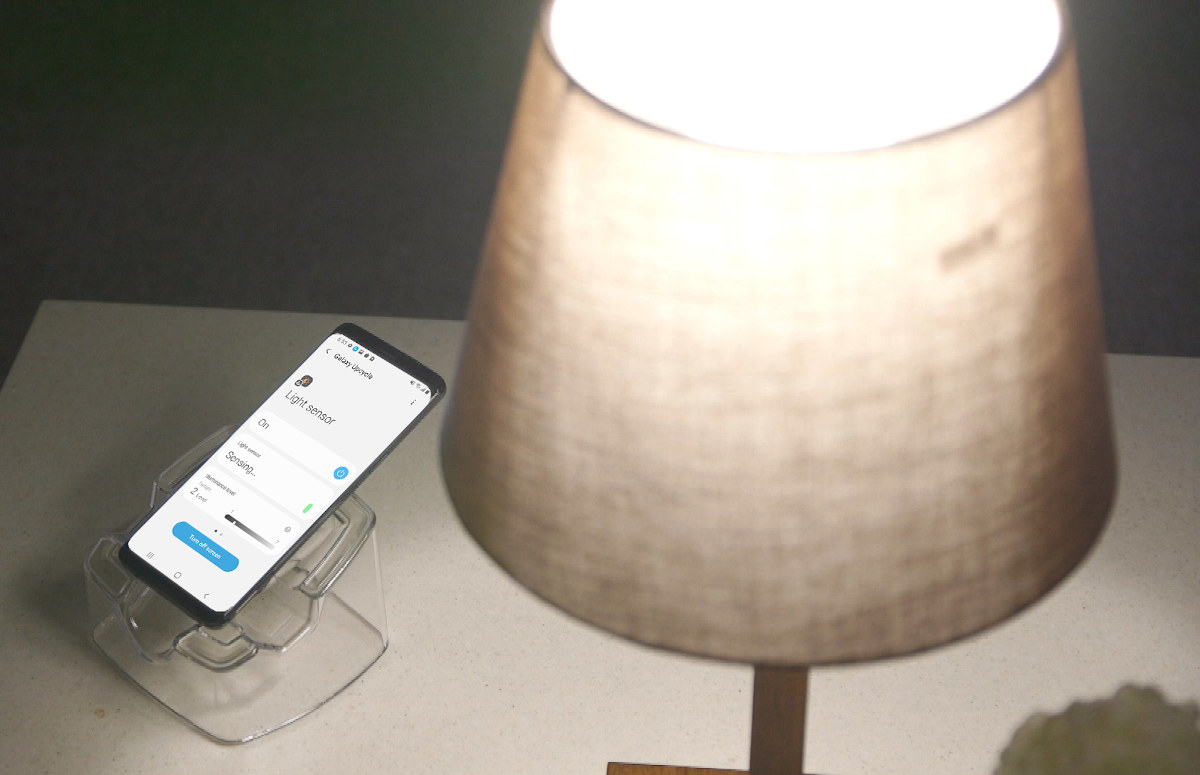I previously used an inexpensive CHIP board as a Linux printer and scanner server for the Canon MP250 USB multi-function printer. It took a while to make it work with a long list of instructions and even then the scanner function was not working very reliably. ValdikSS’s UoWPrint driverless printing and scanning server aims to simplify the process for older USB printers and also supports AirPrint and Mopria standards over WiFi. The older Orange Pi 3G-IoT-A board was the hardware of choice for this project due to its ultra-low price. The resulting product enables users to convert their old USB printer (or MFP) into a WiFi printer/MFP and print and scan without drivers from Windows, macOS, and Linux, as well as mobile operating systems such as iOS/Android. ValdikSS told CNX Software he spent a considerable amount of time backporting patches required to run modern Debian 12 to the kernel 3.2.67 […]
Inkplate 4 TEMPERA ePaper display supports ESPHome, Arduino, and MicroPython (Crowdfunding)
Years after years, Soldered Electronics keeps on churning out new ESP32-powered ePaper displays and the latest model is the Inkplate 4 TEMPERA with a recycled 3.8-inch e-paper touchscreen with 600×600 resolution and plenty of sensors and features for a device of that size. The InkPlate 4 TEMPERA comes with a frontlight, a gyroscope, an accelerometer, temperature, humidity, air quality, and gesture sensors, Wi-Fi and Bluetooth connectivity, a built-in battery, and a low-power operating mode. Inkplate 4 TEMPERA specifications: Wireless module – ESP32-WROVER-E with ESP32 dual-core microcontroller with Wi-Fi 4 & Bluetooth 4.0 connectivity Memory – 8MB PSRAM Storage – 4MB flash PCB antenna Storage – MicroSD card slot Display (ED038TH2) 3.8-inch 3-bit grayscale (black, white, and six shades of gray) ePaper display with 600 x 600 pixels resolution Refresh rate 0.18s partial refresh rate in 1-bit (B&W) mode 0.86s full refresh mode in either 1-bit or 3-bit modes Multi-point touchscreen […]
Inkplate 5 – A 5.2-inch wireless e-paper display programmable with Arduino or MicroPython (Crowdfunding)
The team at Soldered Electronics has been designing Inkplate ESP32-based e-paper displays ever since the first 6-inch model was launched in 2019. The latest Inkplate 5 comes with a recycled 5.2-inch E-Ink (e-paper) display with refresh times of only 0.19 seconds, and programmable with the Arduino IDE or MicroPython firmware. The WiFi-connected display offers a 960×540 resolution, or 213 DPI pixel density, integrates an RTC with battery for accurate timekeeping, two buttons for power and wake/user, and I/O expansion via headers and an easyC/Qwicc connector. Inkplate 5 specifications: Wireless module – Dual-core ESP32 processor with Wi-Fi 4 & Bluetooth 4.0 (BLE) connectivity, 8MB flash, 4MB PSRAM External storage – MicroSD card socket Display – 5.2-inch, 960×540 e-paper display with 213 DPI pixel density Refresh times: full refresh in just 1.02s (1-bit and 3-bit) and partial refresh in 0.19s (1-bit) USB – 1x USB Type-C port for programming and power Expansion […]
Making a DIY Raspberry Pi camera mount with privacy mode!
I’ve just repurposed an empty XYLITOL gum bottle into a DIY camera mount for the Raspberry Pi Camera Module 3 with privacy mode to boot… In order to avoid confusion, while Xylitol is a chemical compound, it’s also a Japanese brand of chewing gums (Lotte XYLITOL) that is sold in Thailand and other countries. I’m specifically talking about the latter in this post. Raspberry Pi Trading has just sent me a bunch of Raspberry Pi Camera Modules 3 for review, and since I don’t have any camera mount I initially thought maybe I’ll laser cut some mount or use some LEGOs as I did with the e-CAM20_CURB camera for Raspberry Pi 4. But then I saw some empty XYLITOL gum bottles, noticed the cap would open vertically, and it seemed like the modules might fit in there as well. And indeed they do with the Raspberry Pi camera modules snugged […]
Use your favorite laptop keyboard with the Techlabz Keybox (Sponsored)
The Techlabz Keybox allows you to re-use your favorite laptop keyboard over USB or Bluetooth. The solution support laptop keyboard from Dell, Asus, Apple, HP, Chromebook, and most other brands on the market. This is how it works. After disassembly of your laptop, or purchasing a replacement laptop keyboard, you can place your keyboard into the provided case, connect it with the provided FFC cable, and use it as a standalone USB or Bluetooth keyboard. Alternatively, you could also place it on top of your laptop palm rest and use it in lieu of the keyboard there. Techlabz Keybox features: Host interfaces USB Type-C port Bluetooth 4.1 LE + EDR Sensor – Ambient Light Detector Battery – 250 mAh/~1Wh battery The Techlabz Keybox also comes with a USB-A to USB-C adapter, a Keyboard Interface Adapter (KIA), an FFC Cable to connect to Keybox from the KIA, a keyboard case, some […]
Nokia 1680 phone gets new PCB with MIPS SoC, runs mainline Linux
Reimu NotMoe has designed the “Notkia” PCB based on Ingenic X1000E MIPS processor with 64MB built-in RAM and following the exact same dimensions as the PCB found in Nokia 168x phones (1680, 1681, 1682), and allowing the phone to run mainline Linux. The board also comes with 32MB NOR flash, a 4GB SLC NAND flash, and supports LoRa, 2.4 GHz WiFi, Bluetooth, and GNSS connectivity, but no cellular modem. Combining Nokia 168x phone with Notkia PCBA creates a phone with the following specifications: SoC – Ingenic X1000E single-core XBurst MIPS processor @ 1.0 GHz (2200+ CoreMark) with 64MB RAM Storage – 32MB NOR flash + 4GB SLC NAND flash Display – 2.0-inch 240×320 IPS LCD, 3/4 visible (Replaces the original 128×160 TFT screen in the phone) Camera – 5MP camera with auto focus (only available in the Nokia 1680 case) Audio – Yamaha MA-3 (YMU762) music synthesizer and regular I2S […]
Octo4a app installs OctoPrint server on Android smartphones
Octoprint is a popular open-source 3D printer controller software that runs on Raspberry Pi boards, Orange Pi Lite SBC, Amlogic TV boxes, and other devices. But considering many people may already an older, perfectly working smartphones at home, FeelFree (Filip) decided to create the Octo4a project that install an Octoprint server on Android smartphones. It makes perfect sense since many smartphones come with a USB OTG interface that can connect to the 3D printer for control, while the touchscreen display is used for the user interface, and the camera to monitor your prints. SSH could be used to access the phone Octoprint server and change the settings manually. You can access the source code and APK files on Github. You’ll need to enable third-party apps in the settings before installing the app in order to install Octoprint on the phone. The only required permission is storage, except if you’d like […]
Samsung Galaxy Upcycling at Home program aims to repurpose older phones into IoT devices
Electronics waste, also as known as e-waste, has been a problem talked about for years, and in 2015 we asked the question “What do you do with your old devices and boards?” as many devices just end up collecting dust or stored in a drawer. Some better ways include giving or selling them to others, or repurpose them. For instance, a cheap Arm HDMI dongle can make a torrent downloader, an old phone can be transformed into a surveillance camera, an ATX power supply could be converted into a bench power supply, etc… But repurposing devices require some technical skills which many of the smart CNX Software readers have, but it’s unrealistic to expect the typical consumer to be able to hack their old devices into new ones using some tutorials found on the Internet. Samsung Galaxy Upcycling Program aims to make recycling upcycling easier for owners of Galaxy smartphones, […]


